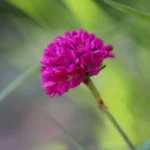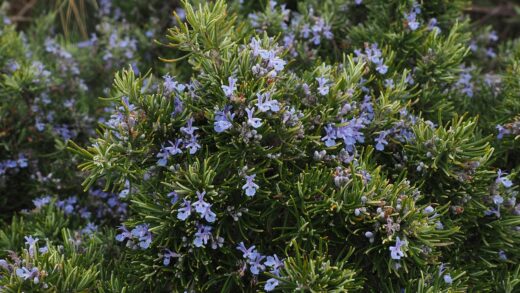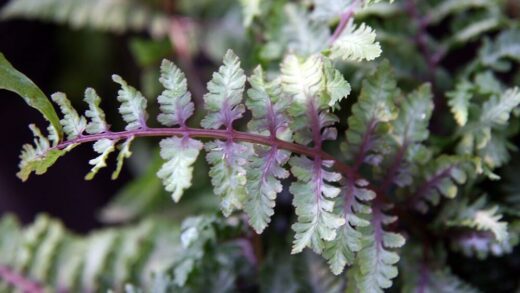The lemon-scented geranium is a truly remarkable plant, cherished not only for its delightful citrus fragrance but also for its attractive, crinkled foliage. To truly unlock its potential and ensure a thriving specimen, a comprehensive understanding of its specific needs is paramount. This involves a holistic approach, considering everything from its daily environmental conditions to its long-term growth habits. Proper care extends beyond simple watering; it encompasses providing the right balance of light, temperature, and nutrients to mimic its native habitat. A well-cared-for plant will reward you with vigorous growth, a more intense aroma, and a beautiful display of delicate flowers, making it a standout feature in any garden or indoor collection.
Cultivating this particular Pelargonium variety successfully requires a keen eye for detail and a proactive mindset. It’s about anticipating the plant’s needs before they become critical issues, such as yellowing leaves or stunted growth. Regular observation is one of the most effective tools in a gardener’s arsenal, allowing for early detection of any potential problems. This plant communicates its state of health through its leaves, stems, and overall posture. Learning to interpret these signals is the key to responsive and effective plant husbandry, ensuring a long and healthy life for your lemon-scented geranium.
Beyond the basic necessities, the environment you create plays a significant role in the plant’s overall well-being. This includes factors like air circulation, which is crucial for preventing fungal diseases, especially in more humid climates or when grown indoors. Grouping it with other plants can help to create a more humid microclimate, but care must be taken to ensure adequate space for air to move freely. The goal is to establish a stable and supportive setting where the plant does not just survive, but actively flourishes, releasing its signature scent with every gentle breeze or touch of its leaves.
Ultimately, the journey of caring for a lemon-scented geranium is a rewarding experience that connects you more deeply with the natural world. It’s a process of learning and adaptation, as you become more attuned to the subtle cues of your plant. This guide will provide the foundational knowledge needed to cultivate a robust and fragrant specimen, empowering you to provide the best possible care. By applying these principles, you will be well-equipped to handle the challenges and celebrate the successes of growing this exceptional aromatic plant.
Understanding the basics of light and temperature
Light is arguably the most critical factor in the successful cultivation of the lemon-scented geranium, directly influencing its growth density, leaf color, and aromatic intensity. These plants thrive in bright conditions and require at least six hours of direct sunlight each day to perform optimally. An ideal location would be a south-facing window for indoor plants or a spot in the garden that receives ample morning sun and some protection from the harsh afternoon rays, especially in hotter climates. Without sufficient light, the stems will become elongated and weak, a condition known as etiolation, as the plant stretches in search of more light.
More articles on this topic
The quality of the foliage and the concentration of the essential oils that produce the characteristic lemon scent are directly correlated with light exposure. In lower light conditions, the leaves may appear a lighter green, and the fragrance will be noticeably less potent. Conversely, with adequate sunlight, the plant will develop a more compact, bushy habit with lush, vibrant green leaves that release a strong, refreshing aroma when brushed against. It’s this response to light that makes positioning so crucial for anyone wanting to maximize the sensory appeal of this particular geranium.
Temperature also plays a pivotal role in the health of your lemon-scented geranium, which prefers a moderate climate. The optimal temperature range for active growth is generally between 18 to 24 degrees Celsius. While they can tolerate slightly higher temperatures, extreme heat can cause stress, leading to wilting and a potential slowdown in growth. It is important to monitor the plant during heatwaves, ensuring it has adequate moisture and, if possible, some shade during the hottest part of the day to prevent leaf scorch.
Conversely, the lemon-scented geranium is not frost-tolerant and must be protected from cold temperatures. Any exposure to temperatures below 5 degrees Celsius can cause significant damage to the foliage and root system, often proving fatal. Therefore, in regions with cold winters, it is essential to bring the plants indoors or into a protected greenhouse before the first frost is expected. This seasonal transition requires careful management to prevent shock, a topic we will explore in more detail when discussing overwintering strategies.
Soil requirements and proper potting
The foundation of a healthy lemon-scented geranium is the soil it grows in, which must provide the right balance of drainage, aeration, and nutrient retention. A well-draining potting mix is absolutely essential, as these plants are highly susceptible to root rot if their roots remain waterlogged. Standard garden soil is often too dense and should be avoided for container-grown specimens. Instead, opt for a high-quality, peat-based commercial potting mix specifically formulated for container plants or cacti and succulents.
More articles on this topic
To create an ideal custom blend, you can combine one part peat moss or coco coir, one part perlite or coarse sand, and one part compost or well-rotted manure. This mixture ensures that water drains freely while still holding enough moisture and nutrients to support healthy growth. The perlite or sand creates air pockets within the soil, which are vital for root respiration and the prevention of anaerobic conditions that lead to rot. Good aeration allows the root system to expand easily and access the necessary resources for vigorous plant development.
When selecting a container, always choose one with ample drainage holes at the bottom. The material of the pot can also influence soil moisture; terracotta or clay pots are porous and allow moisture to evaporate through their walls, which helps to dry out the soil more quickly and is often a good choice for geraniums. Plastic pots retain moisture for longer, which means you will need to water less frequently but be more vigilant about the risk of overwatering. The size of the pot should be appropriate for the plant’s root ball, allowing a few centimeters of space for growth around the sides.
Repotting should be done when the plant becomes root-bound, meaning the roots have filled the entire container, which typically occurs every one to two years. Signs that a plant needs repotting include water running straight through the pot without being absorbed, roots growing out of the drainage holes, and stunted growth. When you repot, choose a container that is only one size larger than the previous one to avoid providing an excessive volume of soil that can stay wet for too long, again increasing the risk of root rot.
The role of pruning in plant health
Pruning is a vital aspect of caring for a lemon-scented geranium, serving multiple purposes that contribute to the plant’s overall health, shape, and productivity. The primary goal of pruning is to encourage a bushier, more compact growth habit. Without regular trimming, these plants can become leggy, with long, sparse stems and fewer leaves, which diminishes their aesthetic appeal and aromatic potential. By pinching back the growing tips, you stimulate the plant to branch out from lower nodes, resulting in a fuller, more well-rounded specimen.
The best time to perform significant pruning is in the early spring, just as the plant is beginning its active growth cycle. This timing allows the plant to recover quickly and put its energy into producing new, healthy shoots. You can cut the plant back by as much as one-third to one-half, focusing on removing any weak, damaged, or overgrown stems. Always use clean, sharp pruning shears or scissors to make clean cuts, which helps to prevent the introduction of diseases into the open wounds.
Throughout the growing season, a practice known as “deadheading” is beneficial. This involves the removal of spent flower blossoms once they have faded. By removing the old flowers, you prevent the plant from expending energy on seed production and instead redirect that energy towards producing more blooms and lush foliage. This simple maintenance task not only improves the plant’s appearance but can also significantly extend the flowering period, providing a longer-lasting display of its delicate blossoms.
Pinching is another crucial technique that can be performed regularly during the spring and summer. This involves using your thumb and forefinger to simply pinch off the very tip of a growing stem, typically just above a leaf node. This action stops the stem from growing longer and encourages the development of two new stems from the node just below the pinch point. Consistent pinching is the most effective way to maintain a compact shape and ensure your lemon-scented geranium remains dense and highly fragrant.
Managing pests and common diseases
While generally robust, the lemon-scented geranium is not immune to pests and diseases, and proactive management is key to keeping your plant healthy. Common pests that may affect this plant include aphids, whiteflies, and spider mites, particularly when grown indoors or in greenhouse conditions where air circulation may be limited. These pests are sap-sucking insects that can cause yellowing leaves, distorted growth, and a general decline in the plant’s vigor. Regular inspection of the undersides of leaves and stem joints is crucial for early detection.
Upon discovering an infestation, it is best to start with the least toxic treatment methods. A strong spray of water from a hose can often dislodge many aphids and spider mites. For more persistent problems, insecticidal soap or horticultural oil can be very effective and are generally safer for the environment and beneficial insects compared to synthetic pesticides. These products work by smothering the pests, so thorough coverage of all plant surfaces, including the undersides of leaves, is essential for them to be effective.
In terms of diseases, the most significant threat to the lemon-scented geranium is root rot, which is almost always caused by overwatering and poorly draining soil. Symptoms of root rot include wilting, yellowing lower leaves, and a soft, mushy base of the stem. Prevention is the only effective cure; once it has taken hold, it is very difficult to save the plant. Ensuring excellent drainage, allowing the soil to dry out between waterings, and never letting the pot sit in a saucer of water are the most important preventative measures.
Fungal diseases like botrytis, or gray mold, can also occur, especially in cool, damp conditions with poor air circulation. This disease appears as a fuzzy gray growth on leaves, stems, and flowers, causing them to decay. To prevent botrytis, avoid overhead watering, provide adequate spacing between plants to promote air movement, and promptly remove any dead or decaying plant material. If an infection does occur, remove the affected parts immediately and consider using a fungicide if the problem persists.
Seasonal care considerations
Caring for your lemon-scented geranium requires adapting your routine to the changing seasons to meet its evolving needs throughout the year. In the spring, as daylight hours increase and temperatures rise, the plant will enter a period of active growth. This is the time to increase watering frequency, begin a regular fertilization schedule, and perform any major pruning to shape the plant and encourage new, bushy growth. It’s also the ideal time to repot if the plant has become root-bound, giving it fresh soil and more space to expand through the summer.
Summer is the peak growing season, and your plant will require the most consistent care during these months. It will need regular watering to cope with higher temperatures and increased transpiration, but always check the soil moisture first to avoid overwatering. Fertilize every two to four weeks with a balanced liquid fertilizer to support vigorous foliage and flower production. Continue to pinch back stems to maintain a compact shape and deadhead spent flowers to encourage continuous blooming. Keep a close eye out for pests, as their populations can explode in the warm weather.
As autumn approaches, the plant’s growth will naturally begin to slow down in response to shorter days and cooler temperatures. This is a signal to start reducing the frequency of both watering and fertilizing. Allow the soil to dry out more thoroughly between waterings, and cut back on fertilizer application, perhaps to once a month, before stopping completely by late autumn. This tapering-off period helps the plant to harden off and prepare for the dormant winter period, reducing the risk of tender new growth that could be damaged by the cold.
Winter care is primarily about protection and maintenance, especially for plants in colder climates. The lemon-scented geranium must be brought indoors before the first frost. Place it in a cool, bright location, such as a south-facing window in an unheated room or a frost-free greenhouse, where temperatures remain above 5 degrees Celsius. During this dormant period, the plant’s water needs are minimal; water only sparingly, just enough to keep the soil from completely drying out. Do not fertilize at all during the winter, and refrain from major pruning until the first signs of new growth appear in the spring.

















